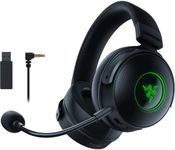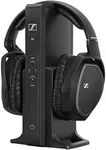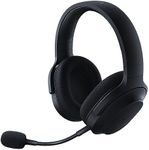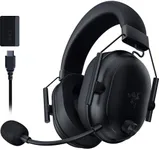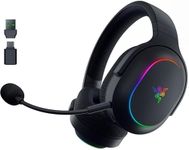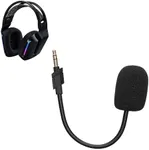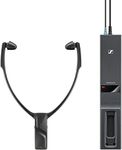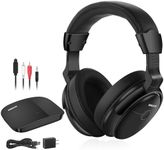Buying Guide for the Best TV Wireless Headsets
Choosing the right wireless headset for your TV can make a big difference in your viewing experience, especially if you want to enjoy clear sound without disturbing others. The best approach is to think about how and where you’ll use the headset, what features matter most to you, and how comfortable you want them to be for longer sessions. Understanding the key specifications will help you match a headset to your needs, whether you’re watching late-night movies, following dialogue-heavy shows, or just want to immerse yourself in your favorite content.Wireless TechnologyWireless headsets for TV typically use either Bluetooth or dedicated radio frequency (RF) transmitters. Bluetooth is common and works with many modern TVs, but can sometimes have a slight delay in audio. RF headsets usually come with a base station that plugs into your TV and offers a longer range and more stable connection, often with less delay. If you want to walk around your home while listening, RF might be better, but if you want to use the headset with multiple devices, Bluetooth offers more flexibility. Consider your TV’s compatibility and your movement needs when choosing.
Battery LifeBattery life tells you how long the headset can be used before needing a recharge. Some headsets last for just a few hours, while others can go for 20 hours or more. If you plan to watch long movies or binge-watch shows, a longer battery life means less frequent charging. For occasional use, shorter battery life may be fine. Think about your typical viewing habits to decide what’s right for you.
Sound QualitySound quality covers how clear and rich the audio is, including bass, treble, and overall balance. Some headsets focus on strong bass, while others highlight clear dialogue. If you watch a lot of action movies, you might prefer a headset with powerful bass. If you mostly watch news or dramas, clear mids and highs for speech are more important. Try to match the sound profile to the type of content you enjoy most.
Comfort and FitComfort is about how the headset feels on your head and ears, especially during long sessions. Some headsets have large, cushioned ear pads and adjustable headbands, while others are lighter and more compact. If you wear glasses or plan to use the headset for hours, look for soft padding and a design that doesn’t squeeze too tightly. Everyone’s head shape is different, so think about what feels best for you.
RangeRange is the maximum distance you can move away from the TV before the sound cuts out. RF headsets often have a longer range (sometimes up to 100 meters), while Bluetooth headsets usually work best within 10 meters. If you want to listen from another room or move around your home, a longer range is important. If you’ll stay close to the TV, range is less of a concern.
LatencyLatency is the delay between the sound playing on your TV and when you hear it in the headset. High latency can cause lip-sync issues, where the audio doesn’t match the video. RF headsets and some Bluetooth models with special low-latency features can reduce this problem. If you’re sensitive to audio delay, especially for watching shows or movies, look for headsets that mention low latency.
Ease of SetupEase of setup refers to how simple it is to connect the headset to your TV. Some headsets are plug-and-play, while others may require pairing or adjusting TV settings. If you’re not comfortable with technology, look for headsets that promise easy setup or come with clear instructions. Consider your own comfort level with electronics when making your choice.
